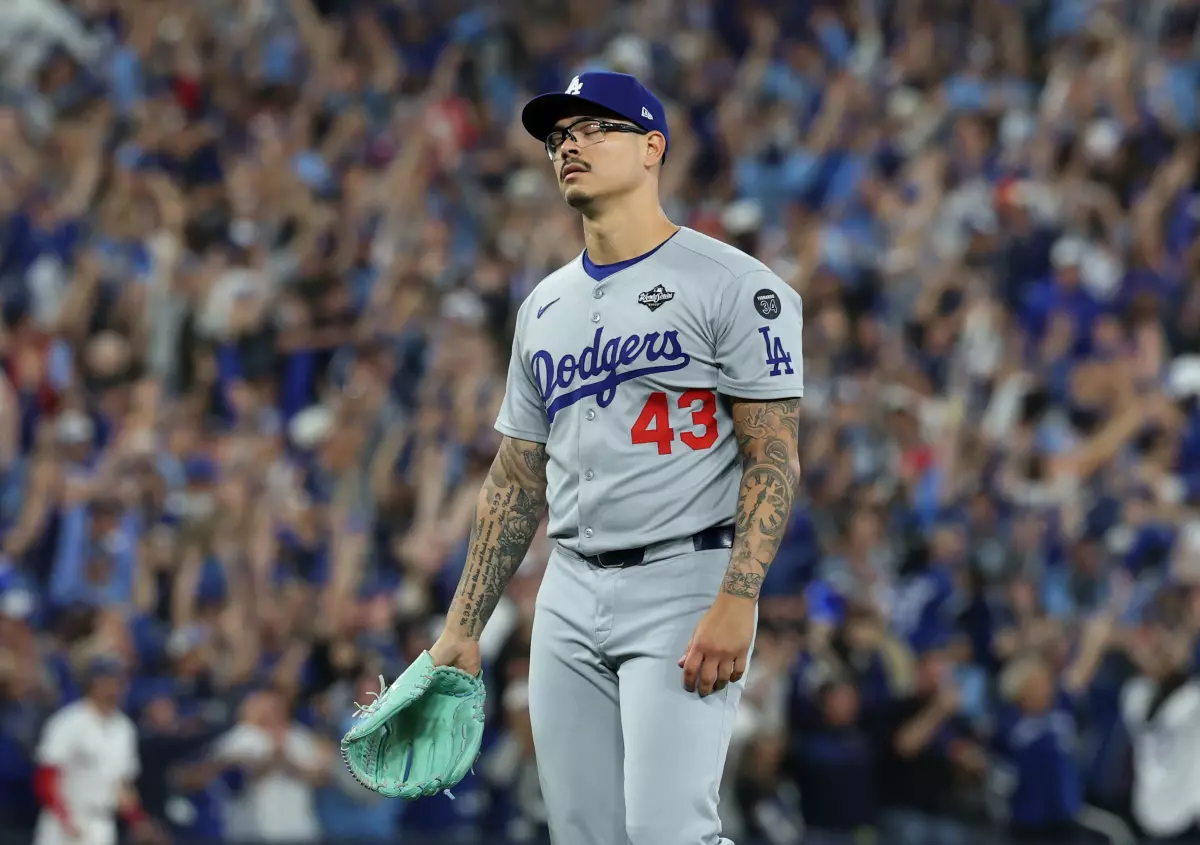The Dodgers opened the 2025 World Series with a rough start, falling to the Toronto Blue Jays in Game 1 by a lopsided score reminiscent of last year’s postseason disappointment. It was the worst World Series Game 1 loss for the Dodgers in decades, drawing uncomfortable comparisons to Game 4 of last year’s Fall Classic, which ended 11-4.
Pre-Game Notes
The atmosphere at Rogers Centre was electric, with Pharrell Williams and the Voices of Fire providing pregame entertainment, stepping in while Anne Murray was reportedly unavailable. Cito Gaston had the honor of throwing out the first pitch, filling in for Garth Iorg and Rance Mulliniks. On the broadcast side, Joe Davis and John Smoltz called the game, adding a professional polish to the evening, though one can’t help but notice the coincidence that the Dodgers’ announcer is also Joe Davis—perhaps a distant relative?
The traditional World Series hype video played before the first pitch, prompting a small eye-roll from fans who were already tuned in, ready to watch history unfold.
First Inning: Early Jitters
The Blue Jays’ crowd made their presence felt immediately. Toronto starter Trey Yesavage, the second-youngest Game 1 starter in World Series history after Ralph Branca, appeared calm under pressure. Meanwhile, Dodgers’ starter Blake Snell seemed a touch off his usual postseason rhythm, perhaps a side effect of the long layoff.
George Springer led off for Toronto, and the first inning set the tone—aggressive, loud, and challenging for the Dodgers’ pitching staff. Snell managed to escape without allowing a run, but the early signs were concerning.
Second Inning: Missed Opportunities
Kiké Hernández once again demonstrated why he’s one of the Dodgers’ most valuable postseason assets, seemingly thriving under pressure. Despite bases loaded and one out, the Dodgers couldn’t capitalize, leaving potential runs stranded. Yesavage held firm, despite showing signs of nervousness, and limited the Dodgers’ momentum. On defense, a rare miscommunication among the middle infielders prevented Freddie Freeman from executing a clean force out, though Snell’s awareness helped salvage the play.
Third and Fourth Innings: Toronto Takes Control
By the third inning, Yesavage began to lose his command, and the Dodgers managed to record only two runs on four hits and three walks—an efficiency issue that would prove costly. At 71 pitches through three innings, Yesavage was working hard but remained competitive.
The fourth inning saw the Dodgers chase pitches, straying from their usual disciplined approach. Toronto capitalized, with Daulton Varsho hitting a two-run homer off Snell—a rare long-ball allowed to a left-handed batter this season. The inning underscored Toronto’s ability to exploit even slight lapses in concentration.
Mid-Game Developments
Yesavage was pulled after four innings, replaced by the bullpen. The Dodgers continued to face challenges both offensively and defensively. A standout moment was Freddie Freeman showcasing his exceptional skill at first base, digging balls out of the dirt with a level of precision reminiscent of past Dodgers greats. Meanwhile, commercials featuring baseball players felt flat compared to nostalgic campaigns like “Chicks Dig the Long Ball,” though a Capital One ad featuring Derek Jeter and Karen Nyberg did manage to entertain.
Sixth Inning: Game Slips Away
The game’s sixth inning became a turning point. Seranthony Dominguez, with one of the most unique names in baseball, came in firing off the mound but struggled under pressure. A walk to Bo Bichette loaded the bases with nobody out—a clear game-changing situation. Emmet Sheehan took the mound for Toronto, and the Dodgers’ hopes for a comeback began to fade.
By this point, it was evident that the Dodgers were on a path to a significant loss. Players who might not get another World Series opportunity entered the game, a reminder of the fleeting nature of championship runs.
Late Innings: Lessons and Perspective
Shohei Ohtani’s home run highlighted the skill gap and the challenge facing the Dodgers. As the game progressed into the eighth and ninth innings, the scoreline became increasingly difficult to watch. However, historical perspective offered some comfort: the Dodgers lost Game 4 of last season 11-4, and Game 1 of the 1959 World Series 11-0—both defeats that didn’t define the series.
The Dodgers’ failure to capitalize on early opportunities proved decisive. Multiple scoring chances were squandered, and the Blue Jays’ pitching staff remained efficient and composed. The lesson is clear: in the World Series, small lapses are magnified.
Looking Ahead
Despite the loss, it’s only one game. The Dodgers have the talent and experience to rebound, and Game 2 presents a fresh opportunity. Yoshinobu Yamamoto, Toronto’s pitcher for the next matchup, is expected to be sharp, making Dodgers adjustments crucial.
On a personal note, the Dodgers organization faces challenges beyond the diamond, with pitcher Alex Vesia and his family going through a difficult time. Fans and the team alike extend their support and best wishes.
Final Thoughts
The Dodgers’ prediction remains “Dodgers in five,” and with a resilient team, there is reason for optimism. Game 1 served as a reminder that even the most accomplished teams can falter—but it’s how they respond that defines a championship run.
For highlights and a full breakdown of Game 1, fans can watch and listen here. Comments and feedback are welcome at houston.mitchell@latimes.com.

